SPAIN HEALTHY COMMUNITIES PROGRAM
“AN INTERVENTION OF COMMUNITY HEALTH AT POPULATION LEVEL IMPROVES PHYSICAL ACTIVITY, THE WAY OF LIFE AND INDICATORS OF POPULATION’S HEALTH, THE INDEX OF HAPPINESS AND QUALITY OF LIFE”

The Healthy Communities Program, a community intervention project to improve cardiovascular health.
The current worldwide epidemic of cardiovascular diseases is the outcome of the consumerist society we live in.
The major increase in the prevalence of these diseases must be addressed by means of multi-sector health promotion and primary prevention strategies that encourage a healthy lifestyle and reduce cardiovascular risk factors, morbidity and mortality.
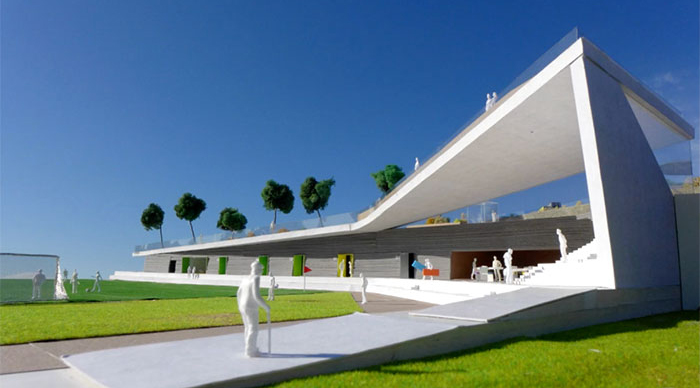
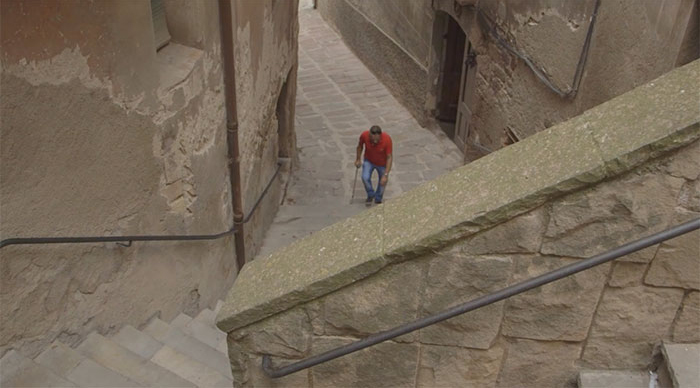
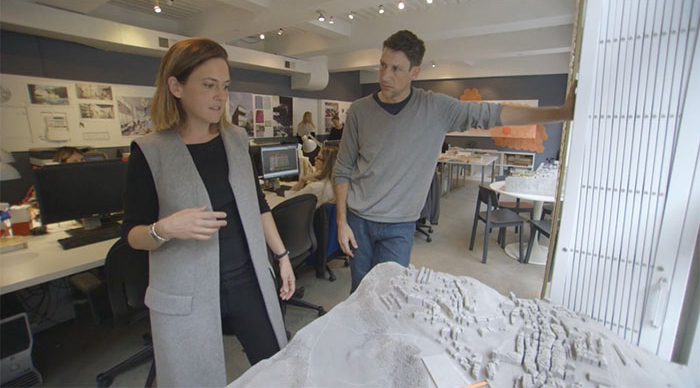
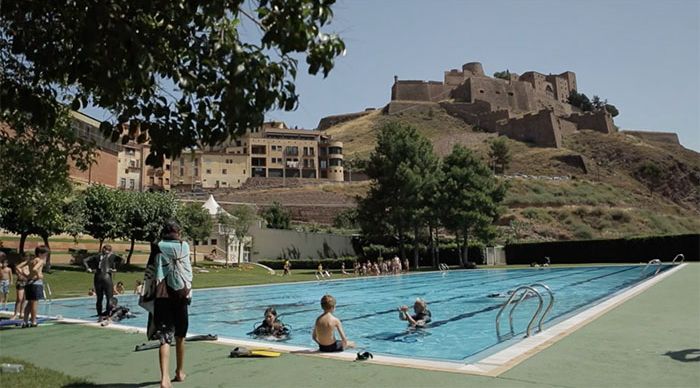
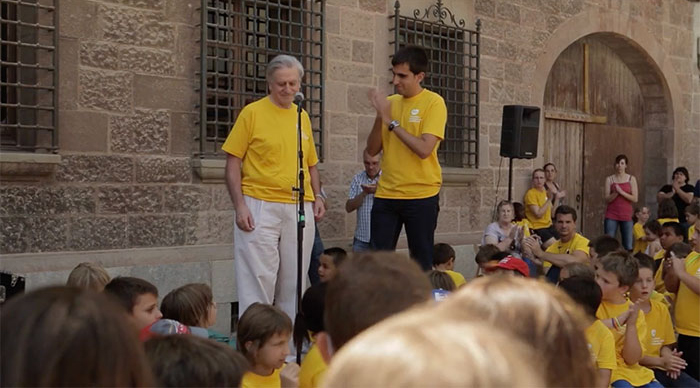
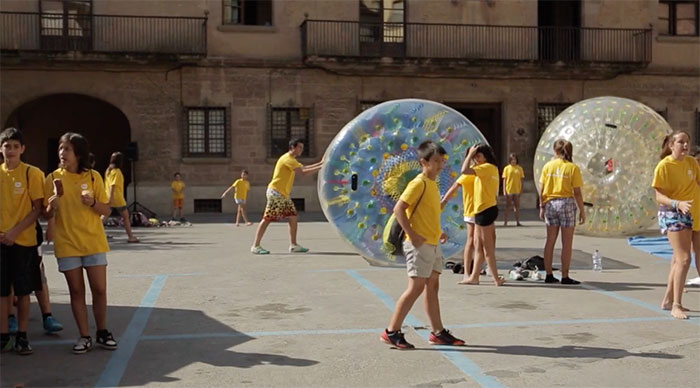
Although mortality by cardiovascular diseases has decreased in the developed countries, the combination of factors such as the population’s greater life expectancy, increased patient survival after a cardiovascular event, or city development and its derived effects (such as a sedentary lifestyle, obesity, changing eating habits and smoking) keep the prevalence of these diseases high[1, 2]. In view of the situation, we must focus our efforts not only on the treatment of cardiovascular disease, but also on primary prevention by means of multi-sector strategies to promote health and healthy lifestyles. Thus, the experts hold that community intervention programs promoting integrated health may have a significant impact on cardiovascular health[3, 4].
In this context, the SHE Foundation, chaired by Dr. Fuster, has started up a ground-breaking health community intervention program in the city of Cardona (Barcelona, Spain). The Healthy Communities Program, implemented in collaboration with the City Council of Cardona, aims to promote the development of healthy lifestyles throughout all stages of life through training programs, healthy leisure activities and outreach events, workshops and group dynamics, as well as promoting a favorable urban and social environment. The aim is to contribute to promoting quality of life, correcting health habits and self-management of the main risk factors for cardiovascular diseases, such as overweight, obesity, physical inactivity, blood pressure and smoking [4, 5].
Consequently, the aim is to turn Cardona into a healthy city, that means, a city that prioritizes the health of its inhabitants in all its actions, including the creation of physical and social environments that promote health. The idea is to be able to create a replicable model for the development of healthy municipalities that make it easier for their inhabitants to follow healthy behaviors and make Cardona a model to follow.
The pilot study in Cardona focused on health programs and activities, educational events and activities, and also on the creation of a physical (healthy urbanism) and social (environment) environment that promotes good health for all.
Community activities were organized, involving the residents of Cardona according to their capacities: races, skating shows, football, projects for the recovery of natural environments with the participation of volunteers, cooking workshops, healthy food markets organized in the city’s main square, the setting up of reading spaces in the local library, etc. Likewise, conferences about health were organized and motivational workshops were held to promote healthy lifestyles [1, 4]. These workshops were led by “health promoters” trained specifically for the program by means of a 20-hour training course. The training of the health promoters included knowledgeabout healthy eating and physical activity, as well as smoking and other addictions or specific health problems, in addition to communication and group dynamics activities [4].
Moreover, Cardona’s program included an ambitious urban development plan designed to provide an atmosphere that promotes, among other things, physical activity among the population.
In this pilot study approximately 10% of the city population was longitudinally assessed in years 2014 (beginning of the pilot study), 2016 (impact of pilot health promotion activities) and 2018 (sustainability, end of the pilot study) through the administration of questionnaires related to lifestyle, wellbeing and self-reported anthropometric measurements. Preliminary results were promising and showed in the first 18-month period (intervention period)a trend toward improvement of their health scores, mainly driven by improvements in the physical activity and dietary components. These findings justified the development of the next stage of the project in which the impact of the creation of a Healthy City will be appropriately tested through a quasi-experimental study design and relevant outcomes, so the model could be accepted and replicated elsewhere.
The analysis of health risk factor profile showed a picture that could be clearly improved with alarming prevalence of smoking (≈25%), sedentary life (≈40%), insufficient fruit/vegetable intake (≈65%), and overweight/obesity (≈45%). An important limitation to improving risk factors in the Cardona population is the paradoxical self-evaluation of health status which is very high and does not correlate with the actual health status of the population. Moreover, approximately 50% of the Cardona inhabitants self-reported intermediate or high levels of stress in a daily basis. Overall, the strong prevalence of sedentary life and the previously mentioned beneficial effect of regular physical activity on health, risk factor reduction and mental well-being suggests that a major intervention to promote physical activity and overall healthy lifestyle in the town will have a very important impact on these parameters.
By promoting a more active lifestyle, the Healthy Communities Program(HC-2030), launched in fall 2021, should encourage people to make healthier decisions about how they move, what they eat and how they use the environment around them. The value of active wellbeing should entail not only doing physical activities or sports on a daily basis, but also having the opportunity and being encouraged to move throughout the day- at work, in times of leisure, with family or friends, and in all daily activities-; and also provide opportunities to improve mental health and happiness.
We hypothesize that a healthy city will impact positively to their inhabitants by improving cardiovascular health and physical activity indices, mental health and wellbeing. For such a purpose, a controlled longitudinal community-based intervention study will be carried out on 2,300 participants (1,150 in the intervention, which is Cardona, and 1,150 in the control town, which is Sallent) 12 years or older over a period of 5 years.
The primary endpoint will be the between group (intervened town vs control town) difference for the change in the Fuster-BEWAT score [4] which consists of a 0-15 scale for behaviors/health factors related to blood pressure, exercise, weight, alimentation (diet), and tobacco use (smoking).
The Healthy Communities Program is a multidisciplinary health-promotion initiative aiming to improve the health and wellbeing of individuals using an innovative combination of programs and urban design to build up a “culture of health”. The project will result in a toolkit for a community-driven health promotion intervention that could be replicated in cities and towns both nationally and internationally. The core of the intervention will be based on the previous health promotion programs developed and evaluated by the Science, Health and Education (SHE) Foundation: the “SI!” Program for children [5,6,7], and the “Fifty-Fifty” Program for adults [4,8,9,10]. The effect of these interventions was proven through randomized trials and the results were published in high-impact journals (Journal of the American College of Cardiology, American Heart Journal, American Journal of Medicine, etc.).
The “SI!” Program is a school-based intervention aimed at promoting cardiovascular Health among children aged 3 to 16 years using their proximal environment (school, teachers, and families). The intervention is designed to instill and develop healthy behaviors in relation to diet, physical activity and emotions, all connected to cardiovascular health.
The “Fifty-Fifty” Program is a peer-group based intervention about topics related to physical activity, nutrition, and psychological aspects of lifestyle change, which is adapted to 3 different aged groups: “Fifty-Action” for young adults aged 17 to 24 years, “Fifty-Fifty” for people aged 25 to 50 years and “Fifty-Plus” for people over 51 years of age.
Along with infrastructure development, knowledge of the benefits of active living will be promoted to increase awareness about the importance of a healthy lifestyle in order to improve health and wellness in three consecutive phases, which will provide comprehensive training to the community.
During the first phase, a full educational and behavioral change program with specific actions and activities to engage and promote health and wellbeing in the community will be implemented; while the second phase will be a transition period where the Cardona inhabitants will progressively acquire a key role in such implementation under moderate supervision. Finally, during phase 3, we expect that the community will become totally empowered to drive their own health and wellbeing promotion program under minimal supervision. A non-intervention town –Sallent, in the same area- will serve as control group.
Assessments will be performed at baseline, and every two years over the course of 5 years. Follow-up assessments will be used to calculate the between group differences (intervention vs. control) for the change in the Fuster-BEWAT score at the end of phase 1 (full supervised program), phase 2 (transition period), and phase 3 (self-community driven program). Each study visit will include clinical interview, physical examination (height, weight, waist circumference, blood pressure and heart rate), point-of-care testing of lipid and glucose profile, lifestyle and behavior questionnaires, assessment of physical activity, evaluation of muscle strength and muscle quality, and assessment of psychosocial well-being. Trained health personnel will conduct all interviews and measurements.
References
- Castellano JM et al. RevEspCardiol. 2014, 67(9):6. Promoción de la salud cardiovascular en tres etapas de la vida: nunca es demasiado pronto, nunca demasiado tarde.
- Villar Álvarez F et al. Med Clin (Barc). 1998, 110:6. Mortalidad cardiovascular en España y sus comunidades autónomas (1975-1992).
- Fuster V. Arch Cardiol Mex. 2010, 80(4):261-71.Science, health and education: a priority and a model.
- Gomez-Pardo E, Fuster V et al. J Am Coll Cardiol. 2016, 67(5):476-85. A Comprehensive Lifestyle Peer Group-Based Intervention on Cardiovascular Risk Factors: The Randomized Controlled Fifty-Fifty Program.
- Penalvo JL, Fuster V et al. J Am Coll Cardiol. 2015, 66(14):1525-34. The SI! Program for Cardiovascular Health Promotion in Early Childhood: A Cluster-Randomized Trial.
- Céspedes J, Fuster V et al. Am J Med, 2013, 126(1):27-35.e3.Targeting preschool children to promote cardiovascular health: cluster randomized trial.
- Fernandez-Jimenez R, Fuster V et al. J Am Coll Cardiol, 2019, 73(16):2011-2021. Child Health Promotion in Underserved Communities: The FAMILIA Trial
- Latina J, Fuster V et al. Am Heart J, 2020; 220:20-8. Grenada Heart Project–Community Health ActioN to EncouraGe healthy BEhaviors (GHPCHANGE): A randomized control peer group–based lifestyle intervention.
- Fernández-Jiménez R, Fuster V et al. J Am Coll Cardiol, 2019, 75: 1 (42-56). Different Lifestyle Interventions in Adults From Underserved Communities. The FAMILIA Trial.
- Fernández-Alvira JM, Fuster V et al. Am Heart J, 2021; 240:81-88.The challenge of sustainability: Long-term results from the Fifty-Fifty peer group-based intervention in cardiovascular risk factors.


